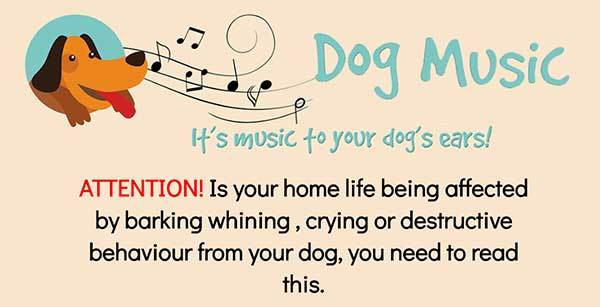Ever catch your dog scratching like their life depends on it? Or licking their paws so much you’re convinced they’ll turn into prunes? That was me with Beethoven, my golden retriever. At first, I thought he was just being quirky, but when it turned into red paws, ear infections, and sleepless nights (for both of us), I knew something was wrong.
If you’re in the same boat, you’re not alone. Allergies in dogs are surprisingly common—and honestly, a bit of a nightmare to figure out. But once you know what you’re dealing with, you can make your pup’s life so much better.
Here’s everything I learned about dog allergies, explained step by step.
What Exactly Are Dog Allergies?
Okay, here’s the science-y part (don’t worry, it’s quick). Allergies happen when your dog’s immune system overreacts to something harmless—like pollen, chicken, or even the shampoo you used on them last week. Instead of ignoring it, their body flips out. The result? Itching, scratching, sneezing, tummy troubles, and a whole lot of discomfort.
Dogs can have three main types of allergies:
- Environmental allergies (things like pollen, dust mites, or mold).
- Food allergies (chicken, beef, wheat—you name it).
- Contact allergies (stuff they touch, like grass, cleaning products, or even flea bites).
The tricky part is that the symptoms overlap. Your dog’s itchy paws could be from pollen, their food, or that new detergent you just bought. It’s like trying to solve a mystery without a single clue.
- ACTIONABLE HEALTH INSIGHTS: Test for over 270 genetic health conditions and get actionable insights to help you give your pup the best care possible....
- MOST ACCURATE BREED IDENTIFICATION: Test for over 350 dog breeds including dingoes, coyotes, wolves, and village dogs. Using a research-grade...
- TRAIT INSIGHTS THAT HELP YOU BE MORE PREPARED: Test for 55 physical traits. Size, coat, grooming needs — your dog's traits don't just make them...
Last update on 2025-01-13 / Affiliate links / Images from Amazon Product Advertising API
Environmental Allergies: When Nature is the Problem
Let’s start with environmental allergies because, honestly, these are some of the hardest to deal with. Beethoven’s environmental allergies would flare up every spring. His paws turned red, His belly got blotchy, and He scratched so much I started to worry He’d hurt herself.
Common Triggers:
- Grass or tree pollen (especially in spring or fall).
- Dust mites (yep, even indoors isn’t always safe).
- Mold spores (think damp basements or leaky areas).
- Other animals’ dander (like if you’ve got cats too).
Symptoms to Watch For:
- Itchy skin (usually on the paws, belly, or face).
- Red or irritated skin.
- Sneezing or watery eyes (yes, dogs can get hay fever!).
- Frequent ear infections.
How to Help:
Here’s what actually worked for Bella after lots of trial and error:
1. Wipe Their Paws: After every walk, I’d use a damp cloth to clean her paws. Yes, it’s tedious, but it helped remove pollen and other irritants.
2. Oatmeal Baths: I started giving her weekly baths with an oatmeal-based shampoo. It soothed her skin and helped calm the itching.
3. Shorter Walks: On high-pollen days, we kept walks short and avoided grassy areas. Bella wasn’t thrilled, but her paws thanked me.
4. Invest in Air Purifiers: This might sound extreme, but an air purifier made a noticeable difference in reducing indoor allergens.
5. Vet-Approved Medications: For severe flare-ups, Beethoven’s vet prescribed antihistamines. They didn’t fix everything, but they made her much more comfortable.
Environmental allergies require a bit of detective work. Your vet might even suggest allergy testing to pinpoint the exact triggers.
- ???????????? ???????????????????????????????? ???????????????????????????????? ???????????? ????????????????????????????...
- ???????????????????????? ???????????? ????????????????????????: Purify your air quickly. With a traditional air inlet and the additional U-shaped air...
- ???????????????????? ????????????????????????????????: The Vital 200S-P is perfect for large, indoor spaces, especially large bedrooms. It has a CADR...
Last update on 2024-12-26 / Affiliate links / Images from Amazon Product Advertising API
Food Allergies: The Surprise in the Bowl
I’ll never forget the day I found out Beethoven was allergic to chicken. CHICKEN. The one thing in every “premium” dog food I’d ever bought Him. For months, she’d been dealing with itchy paws, ear infections, and occasional tummy troubles, and I had no idea it was her food.
Common Food Allergens:
- Proteins like chicken, beef, or lamb.
- Grains like wheat, corn, or soy.
- Dairy products.
- Additives or artificial flavors.
Symptoms of Food Allergies:
- Chronic ear infections (if your dog’s constantly shaking their head, take note).
- Digestive issues like vomiting or diarrhea.
- Itchy skin (often around the ears, paws, or belly).
How to Handle Food Allergies:
1. Elimination Diet: This is how we figured out Beethoven’s allergy. I switched him to a diet of fish and sweet potatoes—no treats, no table scraps, just the basics. It took about 8 weeks, but her symptoms cleared up completely.
2. Reintroduce Foods Slowly: Once her symptoms improved, we reintroduced chicken, and sure enough, the itching came back. That’s how we knew.
3. Stick to Hypoallergenic Foods: Beethoven now eats a fish-based diet, and she’s thriving. Sure, the food smells awful, but it’s worth it.
Food allergies take patience. The elimination diet is tedious, but it’s the most reliable way to figure out what’s causing the problem.
- Real salmon is the number 1 ingredient in this Purina ONE salmon and tuna dry dog food with 30 percent protein to help support strong muscles,...
- Complete and balanced Purina ONE natural dog food with added vitamins, minerals and nutrients and without artificial flavors or preservatives
- Adult dog food crafted by a veterinarian-recommended brand in Purina-owned U.S. facilities, with 100 percent nutrition for adult dogs and 0 percent...
Last update on 2024-12-26 / Affiliate links / Images from Amazon Product Advertising API
Contact Allergies: The Sneaky Culprit
Contact allergies happen when your dog reacts to something they physically touch. For Beethoven, it was a scented laundry detergent I used on his bed. Her belly broke out in red splotches, and I panicked, thinking it was fleas. Nope—just the detergent.
Common Triggers:
- Flea bites (or flea saliva).
- Cleaning products or shampoos.
- Certain fabrics or materials.
- Grass or other plants.
Symptoms to Look For:
- Red, irritated skin (especially in areas that touch the ground, like their belly or paws).
- Small bumps or hives.
- Excessive scratching or licking.
How to Fix It:
1. Switch to Pet-Safe Products: I now use unscented, hypoallergenic detergent for Beethoven’s bedding, and it made a world of difference.
2. Flea Prevention: Fleas are a huge trigger for contact allergies. Stay on top of flea treatments!
3. Keep Things Clean: Wash your dog’s bedding regularly to reduce dust and allergens.
- Persil Free & Sensitive laundry detergent is gentle on skin and tough on stains
- It is hypoallergenic and free of dyes and perfumes
- Persil laundry detergent has fabric protection technology to keep whites and colors vibrant
Last update on 2024-12-26 / Affiliate links / Images from Amazon Product Advertising API
When to Call the Vet
If your dog’s symptoms aren’t improving—or if they’re getting worse—it’s time to call in the pros.
Your vet might suggest:
- Allergy Testing: To identify environmental triggers.
- Prescription Diets: For managing food allergies.
- Medications: Steroids or other treatments for severe cases.
The sooner you address the issue, the sooner your dog can start feeling better.
- 10 Benefits in 1 Daily Treat - PetHonesty's 10-For-1 Multivitamin chews combine a well-rounded blend of the most essential vitamins and supplements...
- Joint Health with Glucosamine - These natural supplement soft chews have high amounts of glucosamine and other joint support ingredients that reduce...
- Improve Digestion with 1 Billion CFU Probiotics - These one a day dog vitamins contain probiotics and pumpkin, which help keep your dog's digestive...
Last update on 2024-12-21 / Affiliate links / Images from Amazon Product Advertising API
Final Thoughts
Dealing with dog allergies is no picnic. It’s frustrating, time-consuming, and honestly a little overwhelming at times. But when you see your dog finally stop scratching, licking, or looking miserable? It’s all worth it.
So, if your pup’s struggling, hang in there. Start small—try changing their food, wiping their paws, or switching shampoos. And don’t be afraid to ask your vet for help. You’ll figure it out, one paw wipe at a time.
Good luck—and give your dog a hug from me. They’ll get through this. And so will you.
Checkout Our Favorite Dog Products
1. BEST PUPPY TOY
We Like: Snuggle Behavior Toy with Heart Beat & Heat Pack – Ideal toy for new puppies.
2. BEST DOG TRAINING PROGRAM
We Like: Doggy Dan The Online Dog Trainer – Stop any dog problem and raise the perfect puppy with The Online Dog Trainer.
3. BEST DOG DNA TEST
We Like: Embark Dog DNA Test – Embark screens for over 250 dog breeds + tests for 170+ genetic diseases including MDR1 drug sensitivity, glaucoma, degenerative myelopathy, and dilated cardiomyopathy, some of the most common adult-onset diseases in dogs.
4. BEST DOG PUZZLE TOY
We Like: Outward Hound Interactive Puzzle Toy – Every dog loves chasing squirrels at the park. The Outward Hound Hide-a-Squirrel Puzzle Toy gives your dog the same feeling as though he was outdoors chasing live squirrels.
5. Best Calming Treats for Dogs
We Like: FurroLandia Hemp Calming Treats – These soft chews will calm your dog so it can peacefully endure stressful situations, such as long car trips, visiting unfamiliar places, or hearing Thunder. Ideal for all dog breeds & sizes.







